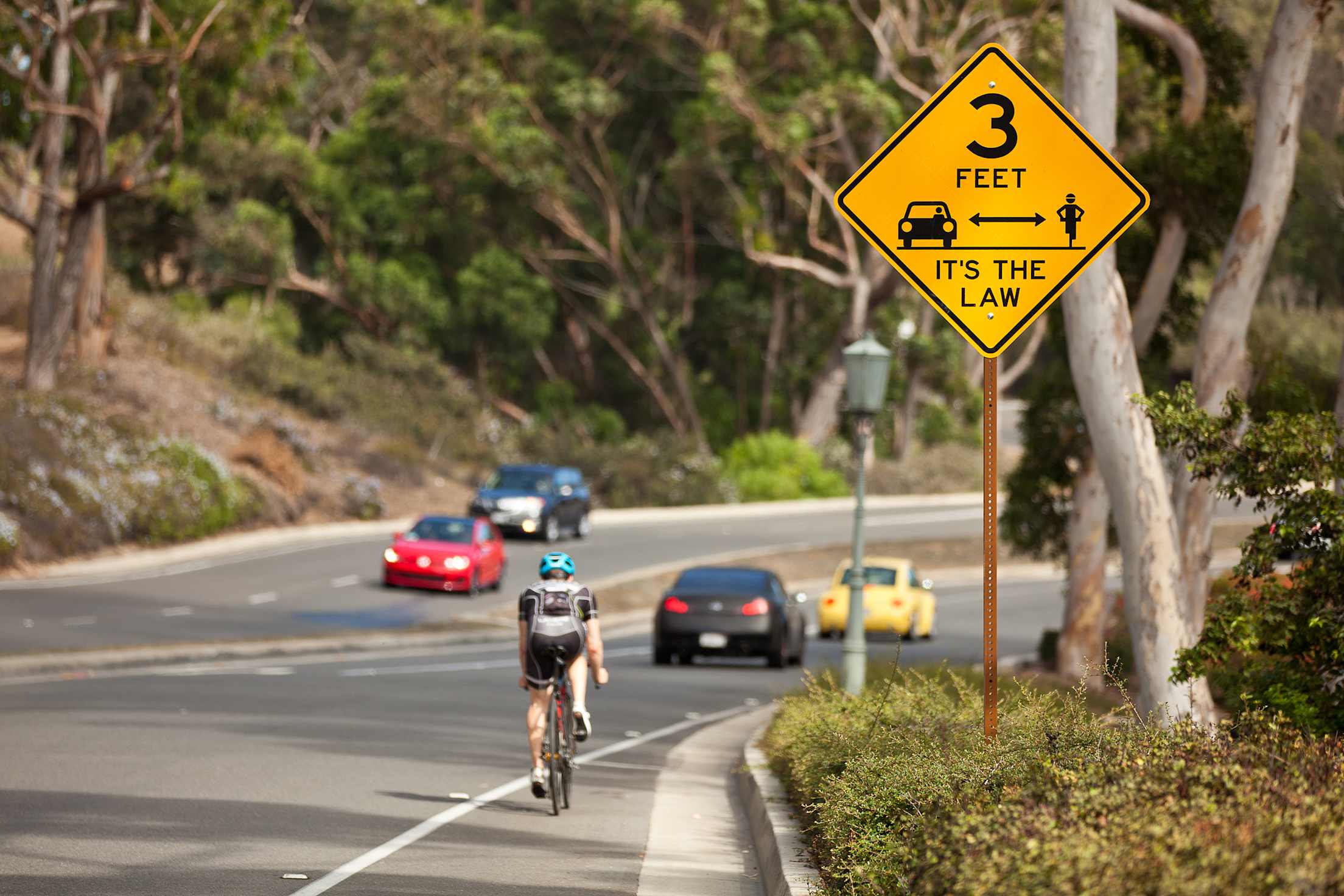
7 Driving Techniques to Reduce Your Risk of a Collision
Protect yourself and others on the road with these skills.

Despite fewer people on the road, deaths from collisions increased by an estimated 8 percent in 2020, according to the nonprofit National Safety Council. As traffic dissipated, reckless driving became increasingly common across the country.
While you can’t control what other drivers are doing, defensive driving techniques can help reduce your risk of being involved in a collision. “Defensive driving is constantly identifying potential risky situations, and responding proactively to prevent trouble,” says William E. Van Tassel, manager of AAA Driver Training Programs.
Learn how to drive defensively and make conscious choices behind the wheel to reduce your risk and stay safer on the road.
Recognize and avoid unsafe drivers.
Speeding, tailgating, and running red lights are aggressive, unsafe habits, and all can be an indication of road rage. Unfortunately, this kind of reckless driving is extremely common in the U.S. Nearly 80 percent of drivers reported significant anger, aggression, or road rage behind the wheel at least once in the previous 30 days according to a 2019 survey from the AAA Foundation for Traffic Safety.
It can be dangerous to become the target of a driver with road rage. “The best approach is to avoid offending any driver,” says Van Tassel. “Never cause another driver [to] change their speed or steer around you.” You should also give aggressive drivers plenty of space and allow them to pass you as easily as possible.
If you are in a tense situation with an enraged driver, do not get out of your vehicle, and try to stay calm. Be polite, forgiving, and courteous. This may help you diffuse the situation without further aggressive action. If the situation cannot be diffused, Van Tassel recommends staying in your car on a well-lit, busy road so that any behavior can be witnessed.

Keep your distance.
Leaving space between you and other vehicles is critical to avoiding collisions. Doing so will allow you to more easily maneuver if traffic stops suddenly or if an incident occurs near you.
“In clear, safe conditions, drivers should follow no closer than three to four seconds behind the vehicle ahead,” Van Tassel says. He recommends adding an additional second for each “negative factor,” such as darkness or hazardous weather conditions such as snow or rain, that you’re experiencing. So if you were driving at night in the rain, you would follow at least six seconds behind the car in front of you.
When stopped or slowing, stay far enough back that you can see where the rear tires on the vehicle in front of you meet the road. This will give you enough room to steer around if a car up ahead breaks down. The additional space will also help you avoid crashing into the car in front of you if you get rear-ended.
To ensure you always have enough room on your other three sides, frequently glance in your side and rearview mirrors to stay aware of the distance between your vehicle and others, as well as your surroundings. When possible, keep at least one lane on either side of your vehicle open in case you need to avoid a collision and swerve out of the way.
Smart Tip: Give drivers who are distracted, talking on their phones, driving below the speed limit, or having a hard time staying in their lane as much space as possible and don’t try to pass them.

Look out for motorcyclists, cyclists, and pedestrians.
While defensive driving is often thought of as a way to avoid collisions with other vehicles, it is also critical to avoid collisions with motorcyclists, cyclists, or pedestrians. Driving near these vulnerable road users requires hyper-awareness and additional space.
Slow down in school zones, actually stop at stop signs and red lights before the crosswalk, and turn around and physically look back before backing up. Remember that backup cameras and other advanced driver safety systems (ADAS) shouldn’t be relied on to stop pedestrian and cycle collisions. You should also physically verify blind spots and look for people walking or riding before pulling out, changing lanes, or turning.
You should give cyclists at least three feet from where their handlebars end, but it’s best to slow down and fully change lanes before passing people on bikes, whenever possible. Take extreme care around children on wheels as they may not know the rules of the road or could behave unexpectedly. “[Children] are hard to see, unpredictable, and probably unaware of the risks of being near traffic,” Tassel says.
Stop driving distractions.
Defensive driving is about taking action to avoid dangerous situations, and that includes any that can come from inside your vehicle. Cell phones, dashboard displays, and other technology can easily pull your attention from the road. People know that distracted driving is unsafe, yet 43 percent of drivers have taken a call (not via Bluetooth) and more than a third have read a text message while driving, according to the 2019 AAA Traffic Safety Culture Index.
To reduce distractions behind the wheel:
- Set up GPS, music streaming, or other technology before you take the car out of park;
- Keep your phone out of reach and out of sight if you aren’t using it for directions;
- Avoid eating or performing personal care tasks, such as applying makeup or shaving;
- Minimize or avoid using the hands-free voice features built into your vehicle, phone, or wearable tech;
- Delay complex or emotional conversations until you reach your destination;
- And get more sleep. Driving tired also makes it difficult to have the focus necessary to drive safely, and drowsy driving is as dangerous as drunk driving.
Focus on the road, and if distractions tempt you, pull over, park, and take a breather.

Factor in the weather.
The safest choice when faced with challenging conditions is to wait for them to improve before heading out. If you can, avoid driving in heavy rain, fog, or decreased visibility conditions.
Snow, ice, wind, and other inclement weather can make it difficult to maintain control of your vehicle. Water and snow can get between your tires and the road, reducing your tires’ ability to grip the surface. “To regain the same level of traction you have in dry conditions, you’ll need to slow down,” says Van Tassel.
You also need visibility to drive safely. Frequently inspect and replace your windshield wiper blades to ensure they are working well. When weather or other conditions reduce visibility, slow down and leave additional space.
If you are driving in snow or ice, be aware that your vehicle’s sensors may need to be cleared off periodically, and that these conditions may reduce effectiveness. In some conditions, ADAS may not work at all, at which point your vehicle will typically notify you.
Always signal.
Drivers are legally required to signal, yet one in four drivers don’t use their indicator when turning, and half fail to signal when changing lanes, according to a 2012 survey from the Society of Automotive Engineers, the most recent available. Signaling shares your intentions with other drivers and keeps you from getting into a collision that is otherwise avoidable. If your indicator is inoperable, you must use hand signals to communicate with other road users.
Don’t speed.
A quarter of all motor vehicle fatalities in 2018 involved speeding, according to the National Highway Traffic Safety Administration. Not only does increasing your vehicle’s speed increase the likelihood of a severe injury or fatal accident, it also fails to get you places as fast as you might think it does. You have to drive at least 100 miles at 75 mph instead of 70 mph to save just 5 minutes.
Of all the steps, this may seem like the most rudimentary, but paired with other defensive driving skills, you can become a safer driver and prevent collisions on the road.
Make smart choices, whether you're buying, selling, insuring, maintaining, or repairing a vehicle.